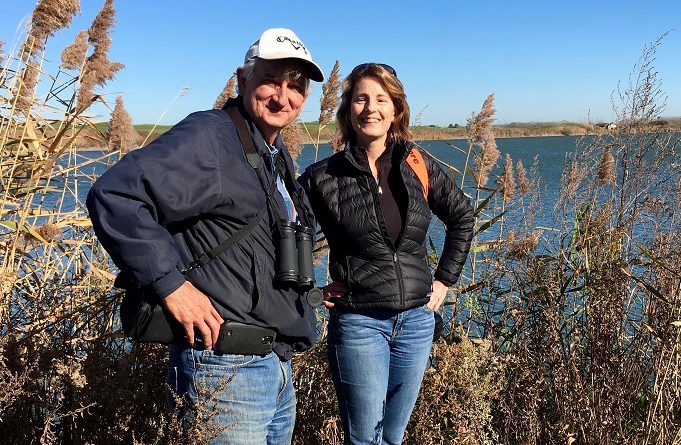Setting Lake Calumet Free
Podcast: Play in new window | Download (Duration: 1:44:13 — 49.8MB)
Subscribe: Apple Podcasts | Spotify | Android | iHeartRadio | Podchaser | Email | TuneIn | RSS | More
What will it take until setting Lake Calumet free becomes a priority in Chicago? I can remember talking to former Chicago Department of the Environment (remember when that existed?) commissioner Suzanne Malec-McKenna. She pulled me aside in the early 2000s to convey her excitement about the future of the Calumet region. Unfortunately, history has a way of messing with the most well-intentioned of plans.
Something happened in Chicago. between the early 2000s and now. I won’t say that it was just the Emanuel Administration, though that man seemed to have absolutely no interest in anything related to planet earth. And that’s despite the announcement in 2014 that And I won’t say that Richie Daley was a green savior, though he was fond of planter boxes on Chicago streets.
We’re now in 2019 and an area that has potential to be a great natural resource sits as a monument to a hundred years of industrial degradation. That’s why folks like Tom Shepherd and Jerry Brown, who were on our show a couple of years ago, continue to lobby for a smart plan for the Calumet region.
The issue has gained a new urgency with the suggestion that the area is ripe for a new casino. Where it will be located is anybody’s guess, but the Lake Calumet area doesn’t seem like the best idea.
Tom and Jerry (yeah, I know, get used to it) are part of something called the Lake Calumet Vision Committee (LCVC). For more than 17 years, LCVC has been dedicated to preserving nature at Lake Calumet. As Shepherd writes,
LCVC has not officially come out against the casino concept, but the majority of our members who have been surveyed thus far have come out against having a casino at Lake Calumet. We continue to insist upon at least 282 acres of the unused portion of the Illinois International Port District-owned property to be set aside for open space, nature, passive recreational opportunities, and open & free enjoyment by the citizens of the surrounding neighborhoods and all Chicago citizens- those who actually own the public property.
Our members include nearly 40 community leaders and organizations who have signed on to our mission, as well as environmental and conservation groups and Chambers of Commerce.
We welcome Tom and Jerry back to the show this morning to talk about a sane future for the Lake Calumet region.
The “alternative” lawn movement
A few weeks ago, we welcomed Ryan Anderson from Midwest Grows Green to talk about fall lawn care. He mentioned that he was working with a company called Pro Time Lawn Seed out of Portland, Oregon. I think what peaked my interest was something called the Dog Park Eco-Lawn Mix. When I did a little research, I found even more custom seed mixes and I was intrigued.
And since we’re at the very time when you should be planting “cool season” lawns in the upper tier of the United States, I decided to reach out to PT Lawn seed. While they’ve been around since 1979, they were taken over by a new team just five years ago. One of those team members is co-owner Amy Cox, who writes that they cater to cool season lawns, like the ones in Chicago.
Long before the word ‘alternative’ entered the mainstream vocabulary, our founders pioneered alternative lawns—low-input, low maintenance seed mixes—and Pro Time Lawn Seed continues to lead the industry at a time when sustainable practices are more important than ever.
Not all grasses are equal. Pro Time uses only high quality seed naturally bred and selected for drought-tolerance, disease resistance, performance, compatibility and beauty—all non-GMO and neonicotinoid-free. Our eco-lawns start with a premium grass base and typically include additional beneficial species such as clovers, flowers and other forbs that persist as an ecologically stable mixture requiring far fewer inputs than a conventional lawn.
Pollinator-friendly planting is more than a trend; the health of pollinators is critical to our food supply and ecosystems. Our pollinator offerings come in many forms: a variety of wildflower seed mixes, grass seed mixes that incorporate wildflowers and, of course, eco-lawn seed mixes with clovers—all of which help create a welcoming habitat for these important contributors. Whether you are creating an attractive border for a kitchen garden, urban meadowscaping, or want a low-maintenance burst of color for the ‘back forty,’ these hard-working mixes can serve many functions in your landscape.
In an article for the Midwest Pesticide Action Center, whose mission has partly been taken up by Midwest Grows Green, she extols the benefits of putting clover in seed mixes.
Clover, the backbone to all self-fertilizing eco-lawns, naturally fixes nitrogen in the soil and feeds itself and other companion plants. With this optimal feeding, eco-lawns form a dense, thick stand–the best natural defense against weeds. Whereas weeds in conventional monoculture lawns look obviously out of place, the diversity of species in eco-lawns tends to disguise the occasional weed or even make it look intentional. These are perfect lawns for those who want to go pesticide-free.
If that sounds familiar, it’s because I’ve been encouraging folks to stop thinking of clover as a week for years. Amy Cox and her colleagues seem to be people I want on my team. She joins us on the show this morning.

